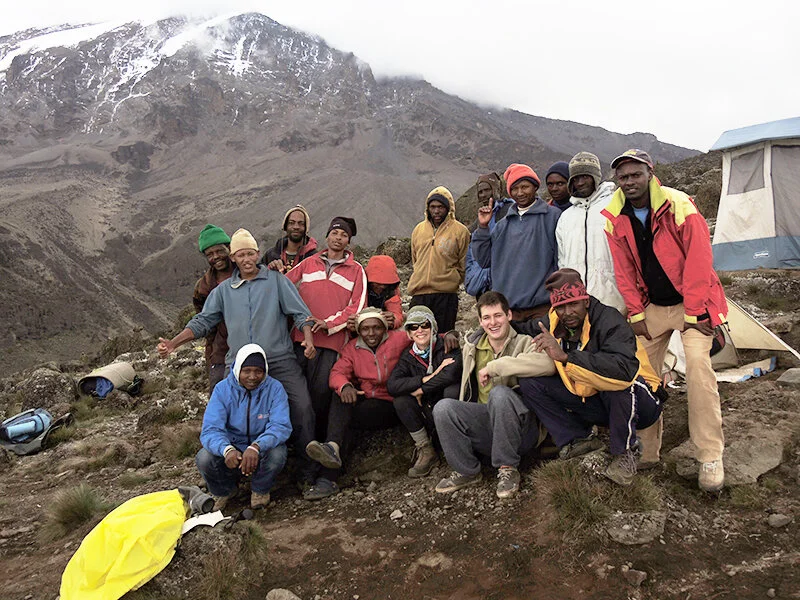Kileo Tours
Kileo Tours is a Tanzanian tour company I co-founded that organizes treks up Mount Kilimanjaro and safaris in the Serengeti. Since it was started five years ago, Kileo Tours has grown into a 20-person company generating over $200,000 in revenue per year.
Background
In 2014, I climbed Mount Kilimanjaro to fulfill a lifelong dream and raise $1500 for Amnesty International in the process.
During the 8-day trek, I really got to know my mountain guide, Jerome Kileo. He shared stories about his life and upbringing, and told me how he wanted to one day start his own tour company. When asked what was stopping him, he explained that he had no way of getting customers.
At the time, I wanted to learn web development, so I offered to build him a website for free. It took weeks of work, but I managed to build a rudimentary website using HTML and CSS. (Pictured)
For weeks, the website did not attract a single visitor other than me and Jerome. But I continued improving the website and its SEO, and visitors began trickling in. Then one day it happened: I received an email notification saying that someone had deposited $1000 into my PayPal for their trek.
That was only the start. In 2016 we leased a vehicle and began offering safaris. Combined with our core Mount Kilimanjaro trekking business, this allowed our revenues to surpass $200k in 2018.
Kileo Tours didn’t succeed because of me. It succeeded because of Jerome’s determination and perseverance. I created opportunities for him, and he jumped on those opportunities and did whatever it took to succeed. It was an unlikely partnership, but the perfect one.
Jerome Kileo, my guide on Mount Kilimanjaro, and later my co-founder.







Lessons Learned
Being a part of Kileo Tours has changed my perspective in my ways. For one, it’s shown me how the internet can unlock new opportunities for African communities. It’s also given me continued interest in Africa, and made me a strong proponent of foreign investment in African infrastructure.
— Top 5 Lessons Learned —
Decentralized Command — In a remote organization, you can’t control and monitor each employees’ actions. Instead, you need to ensure they understand what you’re trying to accomplish, have access to the resources necessary to do so, and have the enthusiasm to meet the goal in their own vision.
Good Things Take Time — If I had treated this as a business, I would have given up a long time ago. It took over a year for the company to gain any real traction, and if I was in it for the money I would have quickly lost interest. But because I treated this as a learning experience, I stuck with the project long enough for it to start gaining momentum.
The World Is Your Market — Initially, I thought all of our clients would come from the United States. That turned out to be false. Our customers came from all over the world, including Norway, Mexico, Chile, Germany, France, Canada, and Australia. Once I shifted our ads across different markets, demand increased significantly.
Automate What You Can — Early on, I automated repetitive tasks. This allowed me to better target and funnel prospective clients and more effectively reply to inquiries. This not only saved me lots of time, it also allowed us to better serve our clients.
Differentiate Yourself — In this industry, every competitor claims to be the “#1 tour company”. We needed to stand out, and so we decided to focus on what came naturally to us: being friendly. We branded ourselves as “Tanzania’s friendliest tour company,” and made that a defining aspect of our offering.























